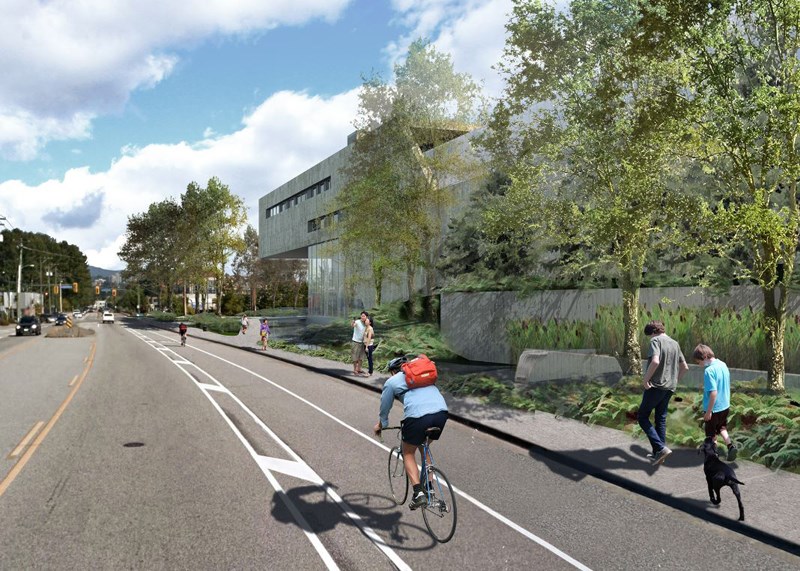Residents driving by an industrial area off North Vancouver’s West First Street near Pemberton Avenue will soon see signs of site excavation as contractors prepare to start work on the North Shore’s new Lions Gate sewage treatment plant.
Metro Vancouver awarded a $525-million contract to design and build the plant April 6 to a group of companies known as the ADAPT consortium.The ADAPT group includes Acciona Infrastructure, Dialog Design, Amec Foster Wheeler and TetraTech.
City of North Vancouver Mayor Darrell Mussatto, chair of Metro Vancouver’s utilities committee, said the consortium has experience building large infrastructure projects throughout the world.
The group was chosen from a short-list of three bidders in a process that has taken place over the past year, said Mussatto. Construction is expected to begin in the spring of 2017 with completion in December 2020.
The announcement of the design and build contract comes less than a month after the province pledged $193 million towards the new $700-million plant.
The amount was slightly less than North Shore mayors had hoped for but came in the nick of time, said Mussatto.
Metro Vancouver is required to update the existing Lions Gate Wastewater Treatment Plant to secondary treatment no later than December 2020 in order to meet federal regulations. If provincial commitments had come any later – even by a month – “we would have been in danger of missing our deadline,” said Mussatto.
The province dollars are in addition to $212 million of federal money for the project announced earlier.
The new plant will provide secondary treatment to about 200,000 residents on the North Shore at a 3.5-hectare site on West First Street between Pemberton and Philip avenues.
The new plant will use ultraviolet light as well as chemical processes to take 90 per cent of dissolved substances out of the waste water – an improvement over the current treatment, which removes between 30 and 40 per cent. Gases from the plant will be contained and put through charcoal filters to eliminate smell, said Mussatto. “You won’t smell it from standing outside,” he said.
It’s also possible methane gas could be captured and used to create electricity, he added.
The plant has also been designed with an eye to possible phosphorous recovery, he said.
One place local residents will notice the new treatment plant is on their tax bills, which will gradually rise to pay for the North Shore’s share of construction costs. “You will notice it, but it won’t be as bad as it could have been,” said Mussatto.



